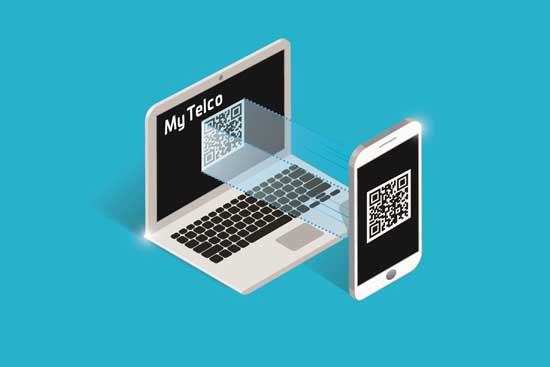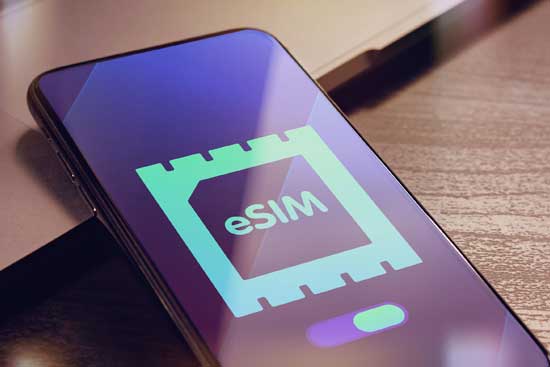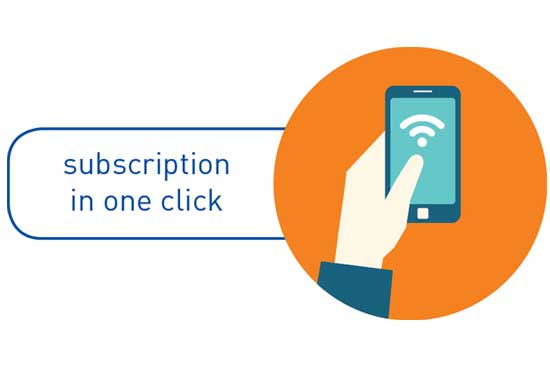
The market continues to witness the arrival of a growing number of eSIM-capable devices, such as Apple's iPhones, iPads, and AndroidTM eSIM-ready smartphones.The growing adoption of eSIM technology is driven by several key factors. With the launch of iPhone 16 following the iPhone 15, the eSIM-only trend initiated by iPhone 14 is further reinforced in the United States. Additionally, there has been a significant increase in eSIM activations worldwide, fueled by the availability of more commercial offers and the growing popularity of eSIM first strategies.
According to Thales intelligence, global eSIM subscription activations have doubled in 2023. Furthermore, in the United States, more than two third of eSIM subscription activations originate from eSIM only smartphones. Stay tuned to explore the exciting world of eSIM activation and discover the benefits it offers.
With the eSIM being soldered deep into the device hardware, mobile ecosystem stakeholders have to answer a vital question:
This article will present the three user-friendly options to remotely activate an eSIM-equipped consumer, such as smartphones, tablets, connected PCs, and smartwatches.
Let's jump right in.
Android is a trademark of Google LLC.
Introduction to the eSIM activation methods
Indeed, the SIM card was the only operator's connectivity element so far.
As a physical form representing the mobile operator's subscription service, the removable SIM card offers users simplicity of use and service freedom.
For this reason, it will still be there for a long time.
The eSIM ecosystem is now turning a physical market (i.e., SIM) for Mobile Network Operators (MNOs) and Original Equipment Manufacturers (OEMs) into a fully digital one.
The SIM card dematerialization represents a "Big Bang" for mobile operators because it constitutes the digitalization of the connectivity distribution.
As the SIM's worthy heir, the eSIM has to bring this customer experience to the upper level.
Before moving forward, let's review three of the main GSMA-compliant eSIM architecture components, behind the scene:
- The embedded SIM (eSIM) acts as a secure container to store the eSIM profile in the device.
- The eSIM profile stores the user's subscription and network settings and allows the user to connect to the corresponding mobile network.
- The operator's Subscription Manager Data Preparation platform (aka SM-DP+), i.e., the eSIM subscription management server, aims at securely downloading subscription it stores onto the eSIM. Once the operator's BSS creates the subscription, it informs the SM-DP+ about its availability and requires completing an eSIM profile.
Let's see the three different ways to activate an eSIM-enabled consumer device, i.e., the various methods to link an eSIM-based mobile subscription and an eSIM-equipped consumer device:
2. carrier app eSIM activation
3. Root SM-DS (Subscription Manager Discovery Service) eSIM activation
#1. QR code-based eSIM voucher activation.

Let's assume a user wants to buy an eSIM-based mobile subscription – at an operator's point of sales or online – for their eSIM-capable device s/he already owns or that s/he'll buy later.
The first option for mobile operators consists of providing customers with a Digital QR code to be scanned with the smartphone to download the eSIM profile (corresponding to the subscription just bought) to their device.
Said differently, this QR code contains a set of information (e.g., SM-DP+ address…) that tells the device where to get its final eSIM profile.
Note that an initial or primary connection must be available for attaching the mobile device and the SM-DP+ that is used to download the final eSIM subscription: this can be through Wi-Fi for instance.
#2. Carrier app eSIM activation

In-app eSIM activation is also a key tool for Mobile Network Operators. It is intuitive and this feature serves to streamline the user experience. This becomes especially crucial within the context of an eSIM-first strategy deployed by Operators.. By incorporating in-app eSIM activation, MNOs can enhance customer interactions through their mobile applications.
In-app solutions allow MNOs to seamlessly integrate eSIM activation and device change functions into their existing mobile apps. This integration minimizes disruptions to back-end operations and reduces the need for extensive mobile app development. Furthermore, this approach offers end-users a fully digital and automated process, thereby improving their overall experience.
The solution typically consists of a client/server approach, where the eSIM SDK (Software Development Kit) is integrated into the MNO's app and a cloud orchestration layer manages eSIM provisioning via API.
Note that delivering a seamless customer experience for mobile eSIM-enabled connectivity extends to various aspects of subscriber lifecycle management and involves several critical elements, including not only subscription activation, but also device change, encompassing both intra-brand and inter-brand scenarios, and subscription upgrade. These components are instrumental in delivering seamless and uninterrupted user journey and this is part of Thales portfolios of solutions.
#3. eSIM activation with Root SM-DS

The Root SM-DS (Subscription Manager Discovery Server) is another standardized method for the download of subscriptions into eSIM-equipped consumer and IoT devices. It is also known in the market as SM-DS or discovery server.
It serves as a central hub that allows devices to discover which SM-DP+ has profile(s) available for them. Mobile network operators inform the Root SM-DS when they have a profile for a specific device, and when the device checks the server, it is directed to the MNO's SM-DP+ to download the eSIM profile.
Major players like Apple, Samsung, GSMA, and Google have launched their own Root SM-DS servers. The GSMA's Root SM-DS, called GSMA eSIM Discovery, can be used by devices of any brand or operating system, while the Google Discovery Service is for Android devices.
From the end-user's perspective, once a subscription is purchased, they receive a message on their mobile device screen to download the profile. It's as simple as accepting the download or checking for a new profile through the device's setup wizard or settings menu.
The introduction of Google eSIM Discovery and Samsung SM-DS in 2023 has sparked interest among mobile operators worldwide, who are preparing to support this method, starting with subsidized devices.
Conclusion: User experience at the center of the eSIM activation mode evolution
According to GSMA Intelligence data, the number of operators supporting eSIM has more than doubled in the last couple of years reaching nearly 400 as of June 2023.
Notably, eSIM-only smartphones are gaining popularity, with Apple leading the trend by introducing eSIM-only models like the iPhone 14 and iPhone 15 in the U.S. market.
The latest figures from the Trusted Connectivity Alliance (TCA) for 2023, show a 109% increase in eSIM consumer profile downloads. Additionally, there was a 12% rise in the deployment of Subscription Manager platforms, in the automotive and IoT industries.
It evidences the willingness of stakeholders to address the eSIM opportunity adequately.
However, optimising the user experience is at the centre of everyone's concerns; it requires continuous work together to deploy an interoperable and seamless eSIM scheme to address the tremendous need for mobile connectivity of billions of IoT devices.

Global eSIMs & iSIMs market 2024-2028
Thales has been recognized as the #1 eSIM/iSIM Platform Provider in Juniper Research's Global eSIMs & iSIMs market 2024-2028 report, amongst an impressive peer group of 18 companies.
Read the Juniper Report
eSIM subscription activation on Samsung Gear S2
This demo showcases the simplicity of managing cellular subscriptions on wearable devices, using Thales' On-Demand Connectivity solution, and an eSIM (embedded SIM or eUICC) inside a Samsung Gear S2.
Subscription Activation on Samsung Gear S2Documents

Best practices for optimizing eSIM adoption
Learning lessons from successful Mobile Network Operators worldwide
Read our guideInfographic

Subscription Manager - SMDS Connect (infographic)
Maximize eSIM activation of eSIM devices. An overview of the smart router: a single contact point to reach and activate a maximum number of eSIM devices. (Infographic)
SMDS Connect infographic [PDF - 500kb]